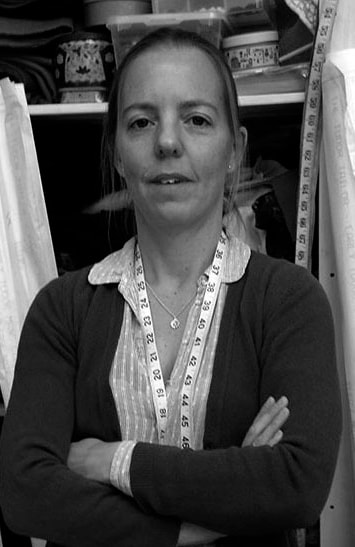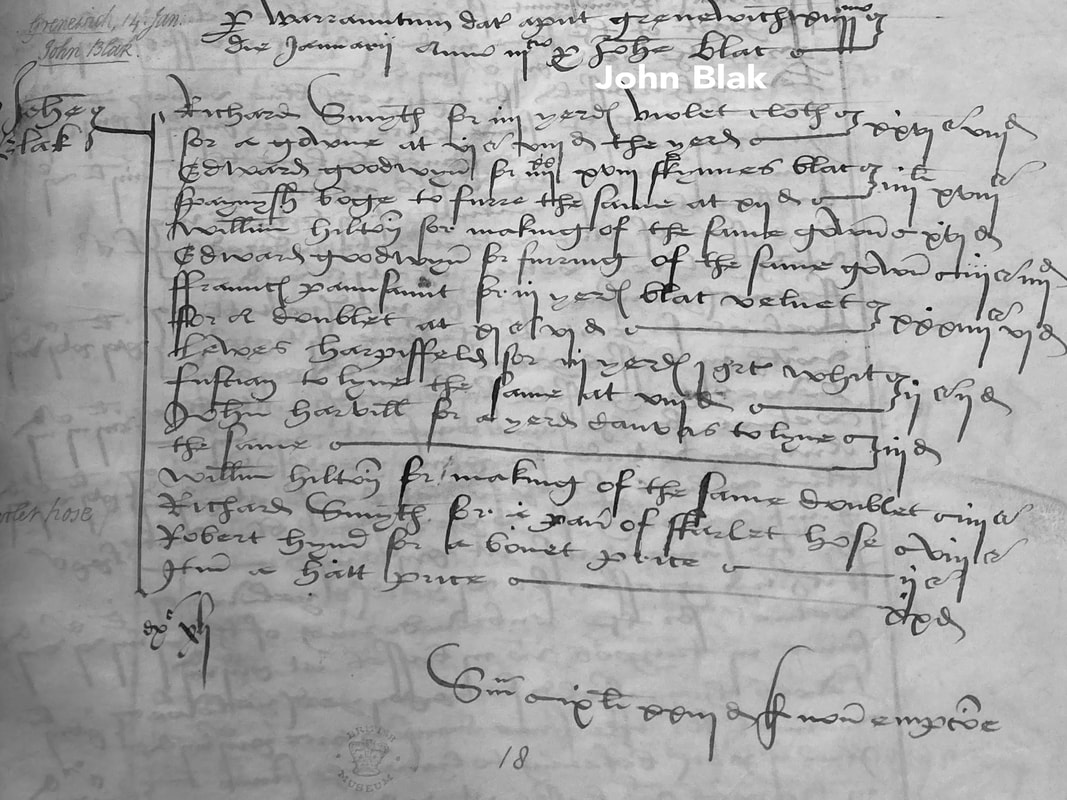What did John Blanke’s wedding clothes look like?In January 1512 Henry VIII instructed the Great Wardrobe to provide clothes to “John Blak (sic), our trompeter," as a wedding present from himself. The garments are described as “a gown of violet cloth, &c., including a bonnet and a hat ". A further document at The British Library, discovered by Sean Cunningham , details the payments made to the suppliers of the materials, and to the tailor for making the garments.
1511-12 accounts of Andrew Windsor, the keeper of the Great Wardrobe, held at the British Library
(BL Egerton MS 3025 folio 18r) Transcription of tailoring account for John Blanke's Wedding Outfit
by warrant dated at Greenwich, 14 January in the this year -1512 - for John Blak (sic) Richard Smith for iiij yards violet cloth for a gown at vj s viij d the yard----------xxvi s viij d Edward Goodwyn for 98 skins of blac spanysh bogie to furre the same at xij d-----iiij li xviij s William Hylton for making of the same gown--------------------------------vij d Edward Goodwyn for furring of the same gown -------------------------------iiij s vi d Fraunces Paunsaunt for iij yards blac velvet for a doublet at xj a vj d-------------xxxiij s vj d Lewes Harpisfeld for iij yards j qtr white fustian to line the same at viij d---------------ij s ij d John Harvill for a yard canvas to line the same---------------------------iij d William Hilton for making of the same doublet-------------------iiij s Richard Smyth for a pair of scarlet hose----------------viij s Robert Hynd for a bonet price---------------------------ij s Item a hatt, price xix d Summa ix li xxiij nova emptcione [sum £9 new purchases] Money notation (pre decimalisation in Feb 1971) li - pounds (£) s - shillings (20s to the pound) d - pennies (12d to the shilling) the j terminates the roman numeral entry for example iij is iii or xviij is xviii This document paints a much fuller picture of John Blanke’s wedding outfit. Most of the expense went into the primary, and outermost garment, which was the gown. John’s gown was cut from four yards of violet cloth and furred with 98 black lambskins called ‘bogie’. The name for the fur derives from Bougie, a medieval Moorish kingdom in North Africa where it was originally imported from. Violet cloth for gowns was given to other royal servants including William Croughton, the king’s hosier in 1511 and Richard Mayre, one of the yeomen of the Ewery in 1512. Both of these gowns were also furred with black lambskin, though it is interesting to note that the provision for Richard Mayre was for Irish lambskin, whereas John’s Blanke’s was to be of the more costly and prestigious Spanish bogie.
John was also provided with a doublet of black velvet, interlined with canvas and lined with white fustian (a linen and cotton mix) as well as a pair of scarlet hose, a bonnet and a hat. Velvet was the most expensive silk fabric and scarlet was a high-quality wool cloth, usually dyed red. An impression of the whole outfit can be seen in Michael Perry’s illustration of the garments provided for William Croughton in 1511 (The King's Servants pg27) . William wears his gown over a skirted tawny jacket which partially obscures the black doublet below. The cloth allowed for the gown was half a yard more than John’s, and the garment would therefore have been a bit more generously cut in the width of the skirts and sleeves, but the overall appearance of colours and styles is very much how John Blanke would have looked on his wedding day. Bibliography
The King's Servants A Tudor Tailor Case Study by Caroline Johnson Editors: Jane Malcolm-Davies & Ninya Mikhaila The Typical Tudor Reconstructing Everyday 16th Century Dress |
| The John Blanke Project | Ninya Mikhaila |


